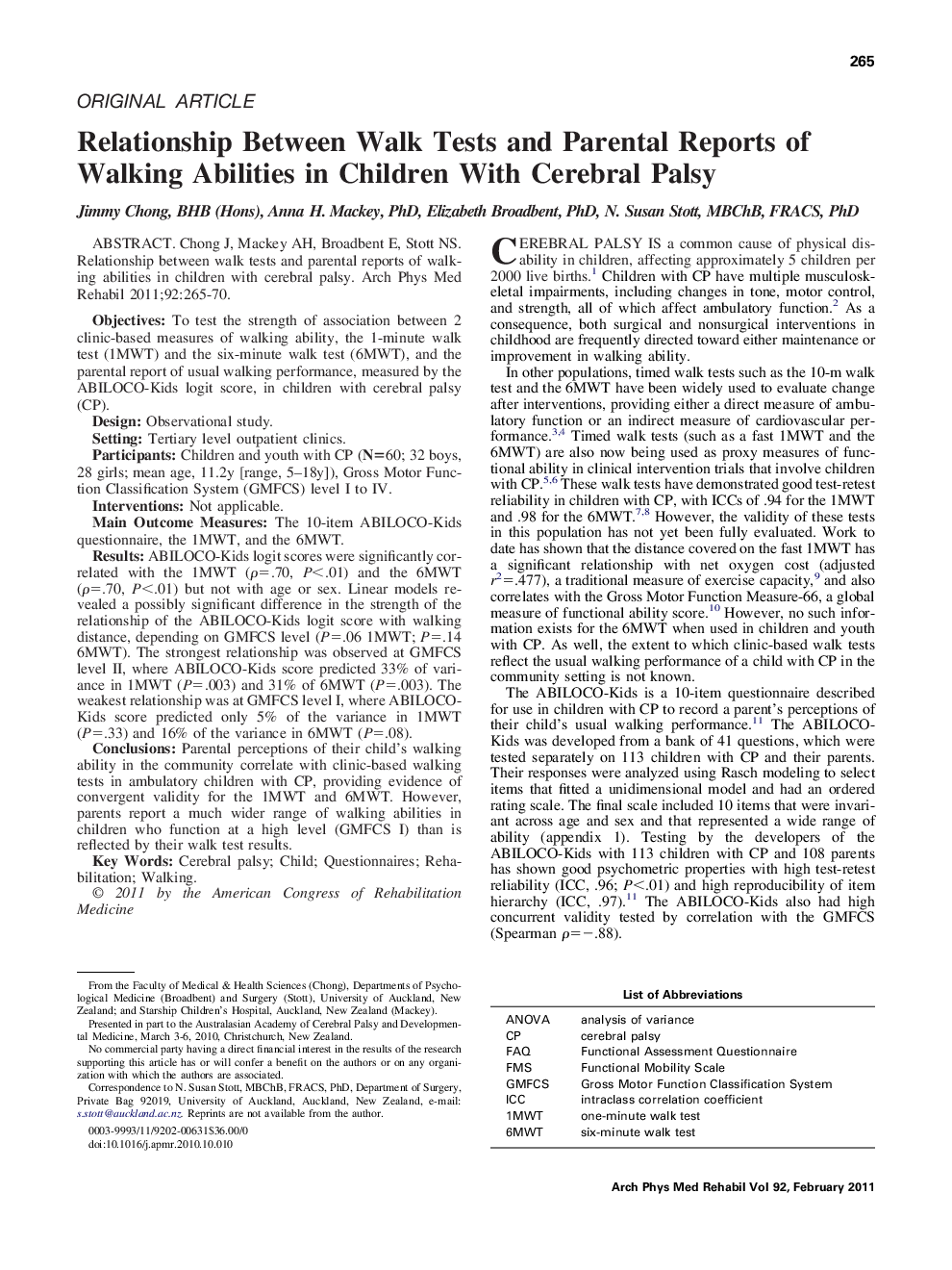| کد مقاله | کد نشریه | سال انتشار | مقاله انگلیسی | نسخه تمام متن |
|---|---|---|---|---|
| 3450486 | 1595743 | 2011 | 6 صفحه PDF | دانلود رایگان |

Chong J, Mackey AH, Broadbent E, Stott NS. Relationship between walk tests and parental reports of walking abilities in children with cerebral palsy.ObjectivesTo test the strength of association between 2 clinic-based measures of walking ability, the 1-minute walk test (1MWT) and the six-minute walk test (6MWT), and the parental report of usual walking performance, measured by the ABILOCO-Kids logit score, in children with cerebral palsy (CP).DesignObservational study.SettingTertiary level outpatient clinics.ParticipantsChildren and youth with CP (N=60; 32 boys, 28 girls; mean age, 11.2y [range, 5–18y]), Gross Motor Function Classification System (GMFCS) level I to IV.InterventionsNot applicable.Main Outcome MeasuresThe 10-item ABILOCO-Kids questionnaire, the 1MWT, and the 6MWT.ResultsABILOCO-Kids logit scores were significantly correlated with the 1MWT (ρ=.70, P<.01) and the 6MWT (ρ=.70, P<.01) but not with age or sex. Linear models revealed a possibly significant difference in the strength of the relationship of the ABILOCO-Kids logit score with walking distance, depending on GMFCS level (P=.06 1MWT; P=.14 6MWT). The strongest relationship was observed at GMFCS level II, where ABILOCO-Kids score predicted 33% of variance in 1MWT (P=.003) and 31% of 6MWT (P=.003). The weakest relationship was at GMFCS level I, where ABILOCO-Kids score predicted only 5% of the variance in 1MWT (P=.33) and 16% of the variance in 6MWT (P=.08).ConclusionsParental perceptions of their child's walking ability in the community correlate with clinic-based walking tests in ambulatory children with CP, providing evidence of convergent validity for the 1MWT and 6MWT. However, parents report a much wider range of walking abilities in children who function at a high level (GMFCS I) than is reflected by their walk test results.
Journal: Archives of Physical Medicine and Rehabilitation - Volume 92, Issue 2, February 2011, Pages 265–270